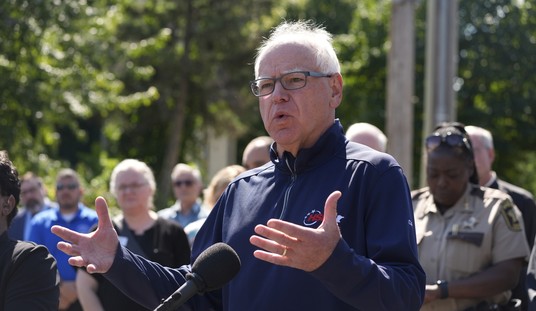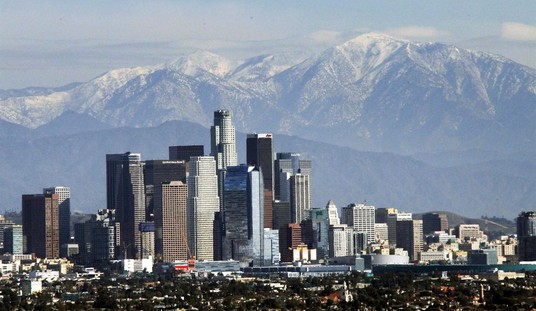It was rather surprising news to come out that documentary filmmaker Morgan Spurlock passed away on May 24 at the age of 53, a victim of cancer. If you do not know Spurlock by name you may possibly recognize him, and more certainly are aware of his most famous film - “Super Size Me” - taking on the McDonalds corporation and the travails of consuming fast food. This was the film where Morgan pledged to eat three meals a day at McDonald's for a month and would agree to supersize his order whenever prompted.
Spurlock parlayed that success into a string of other films, as well as producing documentary television programming on a number of cable networks. It can be said that Spurlock helped transform the documentary film genre to some degree, as he helped alter that category from being a very dry, and frequently boring style of motion picture. Look at how today Netflix has developed a sub-category on its platform of documentary films and series that have resonated with viewers; this can at least be partially attributable to Spurlock’s influence, creating what could be described as populist documentaries.
A generation back the documentary was regarded as little more than required viewing – that is to say, most people only saw these titles if they had been required to view them, in some capacity. These films were almost certainly gravely serious as they presented almost entirely “serious” subject matter. Inner city poverty, global societies in oppressive situations, and war-torn lands were typical topics featured in this category. Then came Michael Moore.
Moore upended the documentary by bringing in a willingness to inject humor, snarkiness, and scorn as well as making himself a central aspect of his films. He brought something not before realized in this category – audiences. Before Moore, it was extremely rare for a documentary to break through into the public consciousness, let alone become popular. He showed these films could become money-making ventures (albeit still extremely modest by studio release standards), seeing the term “doc-buster” becoming coined.
But while delivering a new tone to this category Moore was still tackling serious topics. His features covered the economics of the dwindling auto industry (“Roger & Me”), gun control (“Bowling For Columbine”), or the White House (“Fahrenheit 9/11”). Spurlock took that new approach as inspiration and crafted a feature that was smaller in scope and appealed directly to most Americans - though still applied at a monolithic target.

I was able to see the development of “Supersize Me” very early in its emergence. I attended the Sundance Film Festival the year Spurlock’s film debuted and it was interesting to see this film attach itself to the audience. Back then the festival would have a certain buzz around particular movies, with people asking “Have you seen…?”, or angling for hard-to-get tickets. “Napoleon Dynamite” was probably the hottest title at that year’s festival, but “Supersize Me” was another of the hot ticket films.
In between viewings on my schedule, I ran into the marketing team for the film at an area bar and they were notably excited about the heat being generated, handing me a branded ski cap with the logo of the film. Throughout the town, there was a ubiquitous presence of the poster for the film, a gaudy display of Ronald McDonald drawn in obese fashion and sporting a gold chain with a “$” symbol. This would never be allowed to fly as a general marketing ploy, but it delivered the results
In honor of the sudden passing of Morgan Spurlock, here is the original poster seen around Park City the year "Super Size Me" debuted at the Sundance Film Festival. pic.twitter.com/m9EQFGQPZw
— Lie-Able Sources (@LieAbleSources) May 27, 2024
The film managed to gross over $20 million, a massive sum by documentary standards, leading a few spinoff projects like a companion book, and Dark Horse published a graphic novel based on the film. Spurlock used that juice to continue producing films and also parlayed it into steady television work. Expanding on his own theme, he developed “30 Days” for the FX Channel, where he or others would be inserted into cultural situations for a month. On CNN he produced “Morgan Spurlock Inside Man”, a series exploring more serious topics, which ran for four seasons, and he helped launch one of the first original series on Hulu, following notable figures for 24 hours in “A Day In The Life”.
One of his follow-up features was “Pom Wonderful Presents: The Greatest Movie Ever Sold”, which was centered on how advertising has permeated the film industry and our culture. I had higher hopes for this, given my work of covering the film industry from the business side, but this felt more like a primer for folks on product placement, rather than a deep exploration.
Years back I was researching this topic to see just how deep it can go, and the marketing in movies is so immersed there are instances we do not even realize. Sometimes companies lobby to have their products removed if there is a scene that might portray their product negatively. I found a California business dedicated to arranging to have products displayed in films, and it gets extremely arcane. In one instance police scenes had their vehicles outfitted in a particular way so the company that produces the rooftop flashing lights had its brand used, using that placement for marketing to regional police departments.
Spurlock did not go to these lengths in his film, but it was interesting when he had cameras present for the negotiations with various boards of companies to see their concerns and desires if they were to come on board. In the end, he financed his film with a budget greatly exceeding normal documentaries and even was able to perform some of his own product placement. He showed in Florida the Broward County school board deriving funds through advertising on campuses, so he promoted his film with a high school in my city, paying for vinyl fence signs and even having an immense mural of Spurlock painted on a building, riding the colt mascot. That painting remained visible onsite for years.
While it may be a stretch to say Spurlock revolutionized the documentary film, he has to at least be credited for opening up other avenues for the genre, making the category more palatable for the audiences. Some may decry the populist approach, but if you get more exposure for topics and get people thinking, how is that regarded as a negative?














Join the conversation as a VIP Member